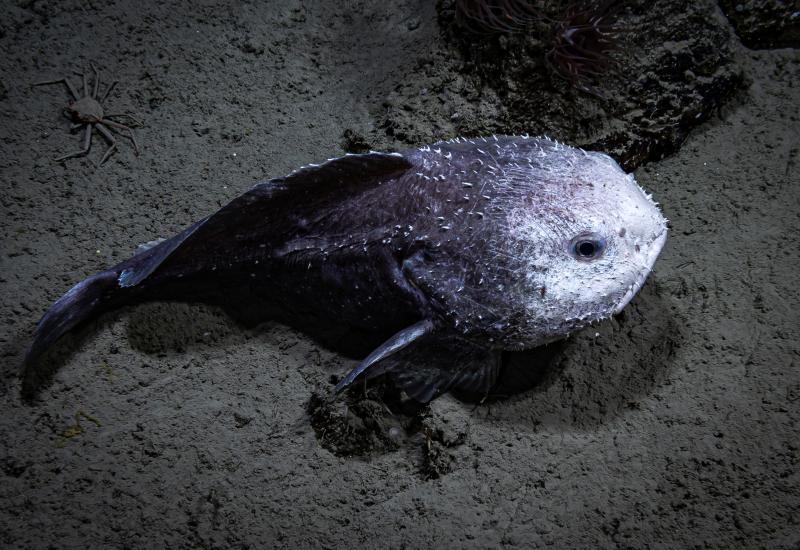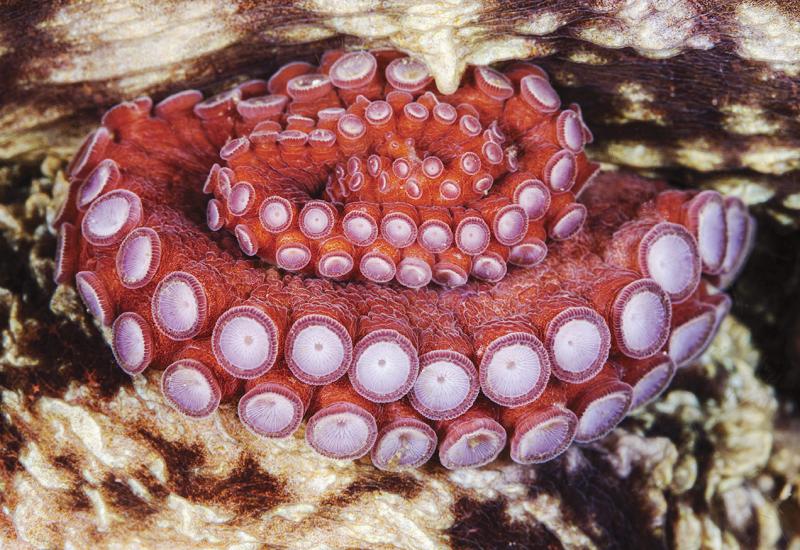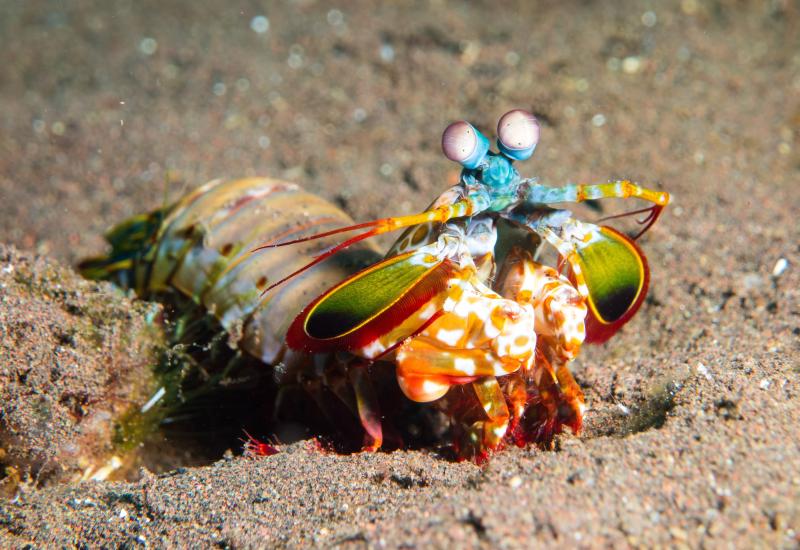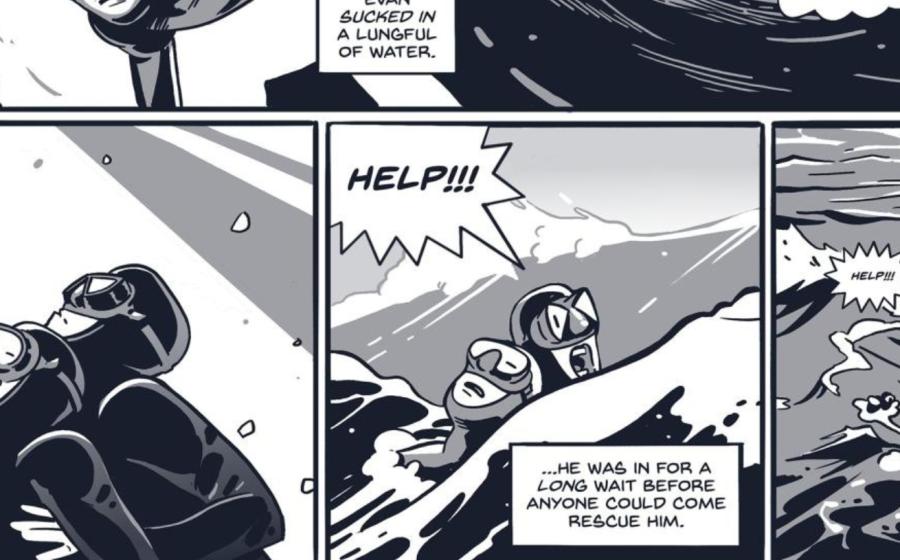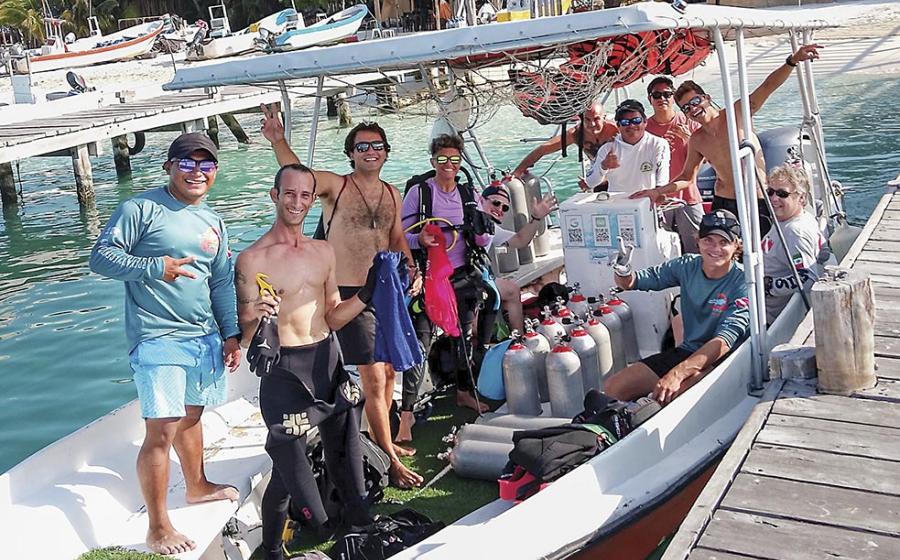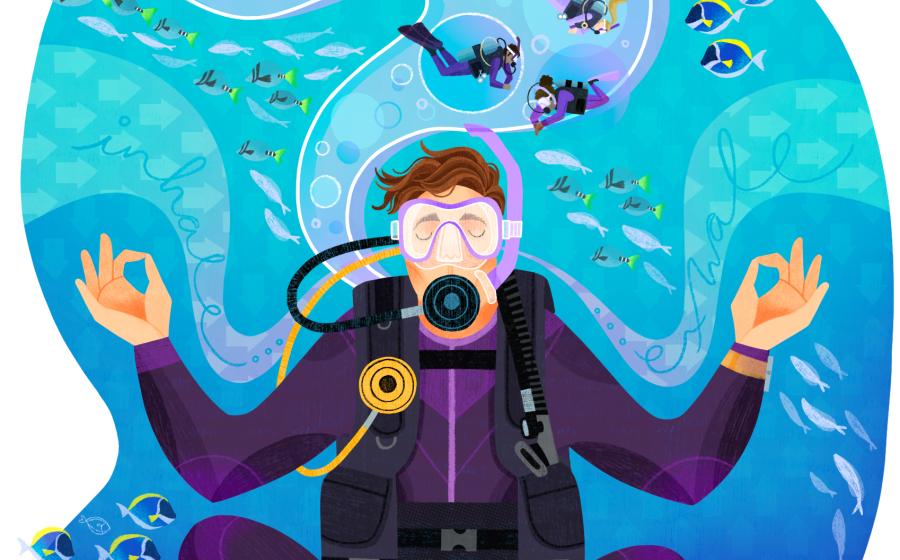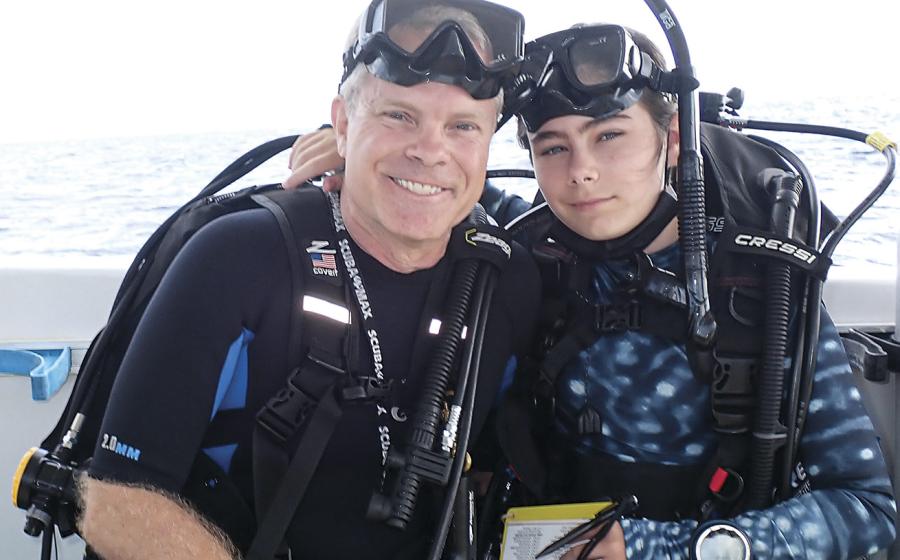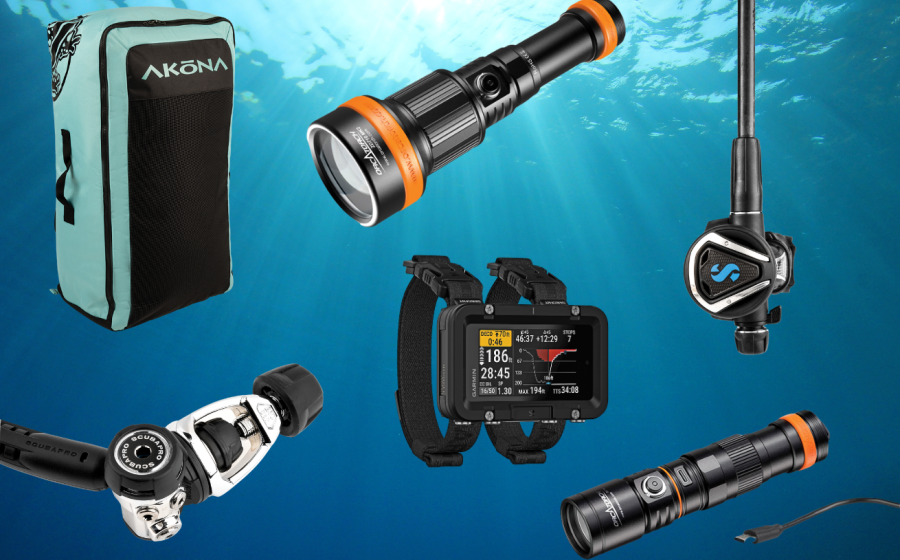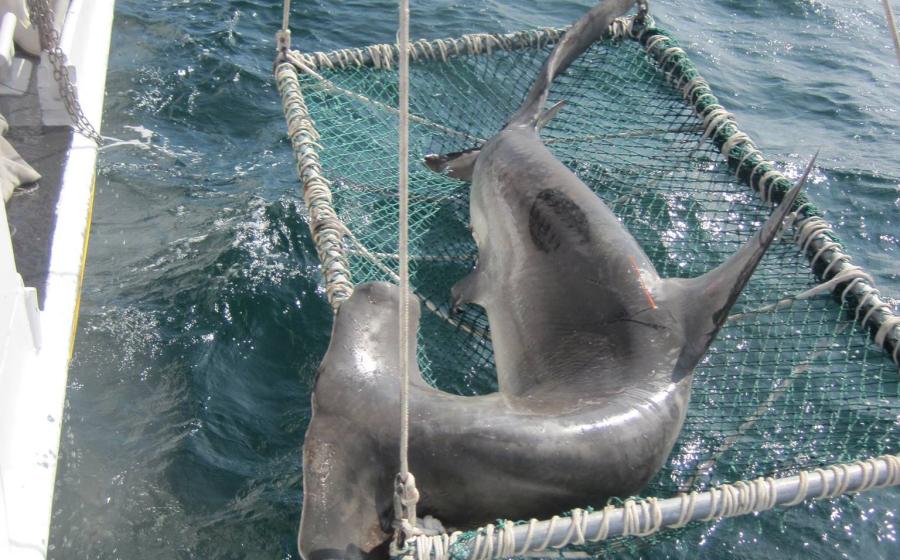Image Tips: How to Shoot in Current
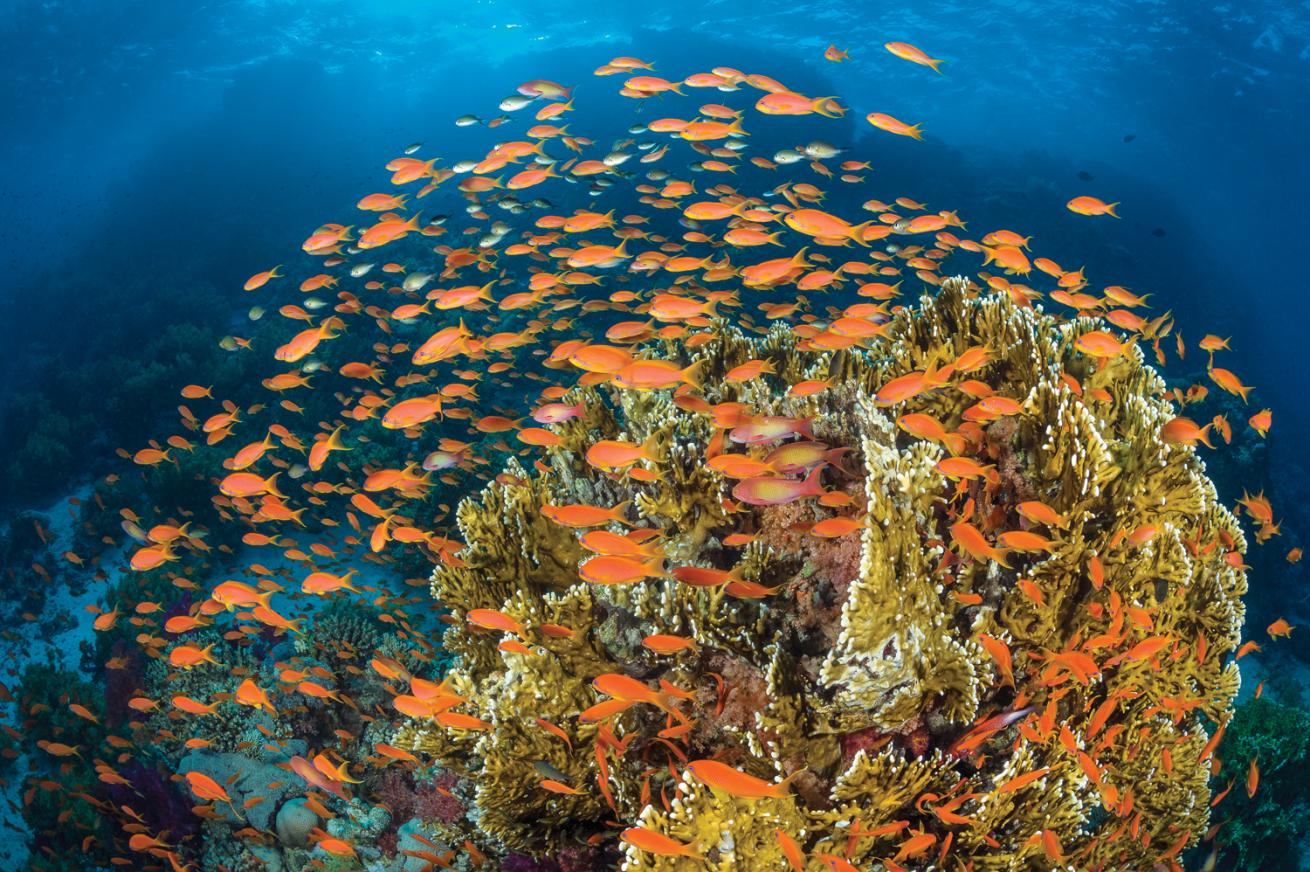
Alex MustardPhoto Tips: Fish Formation
CAMERA Nikon D4, Subal housing // LENS Sigma 15mm fish-eye // STROBES Seacam 150 // SETTINGS f/16, 1/250 sec, ISO 320 // LOCATION Ras Mohammed, EgyptAs a positive, currents whip fish — the underwater world’s least cooperative models — into beautiful, photogenic formations. I planned this shot while finding shelter in the lee of the reef in the background. Then I swam out to this small coral head, puffing and panting, to get my shot.

Alex MustardPhoto Tips: North Wall, Grand Cayman
CAMERA Nikon D4, Subal housing // LENS Nikon 16mm fish-eye // STROBES Subtronic Alphas // SETTINGS f/16, 1/25 sec, ISO 200 // LOCATION North Wall, Grand CaymanAn outcropping of coral makes an excellent foreground for those sporting wide-angle lenses.
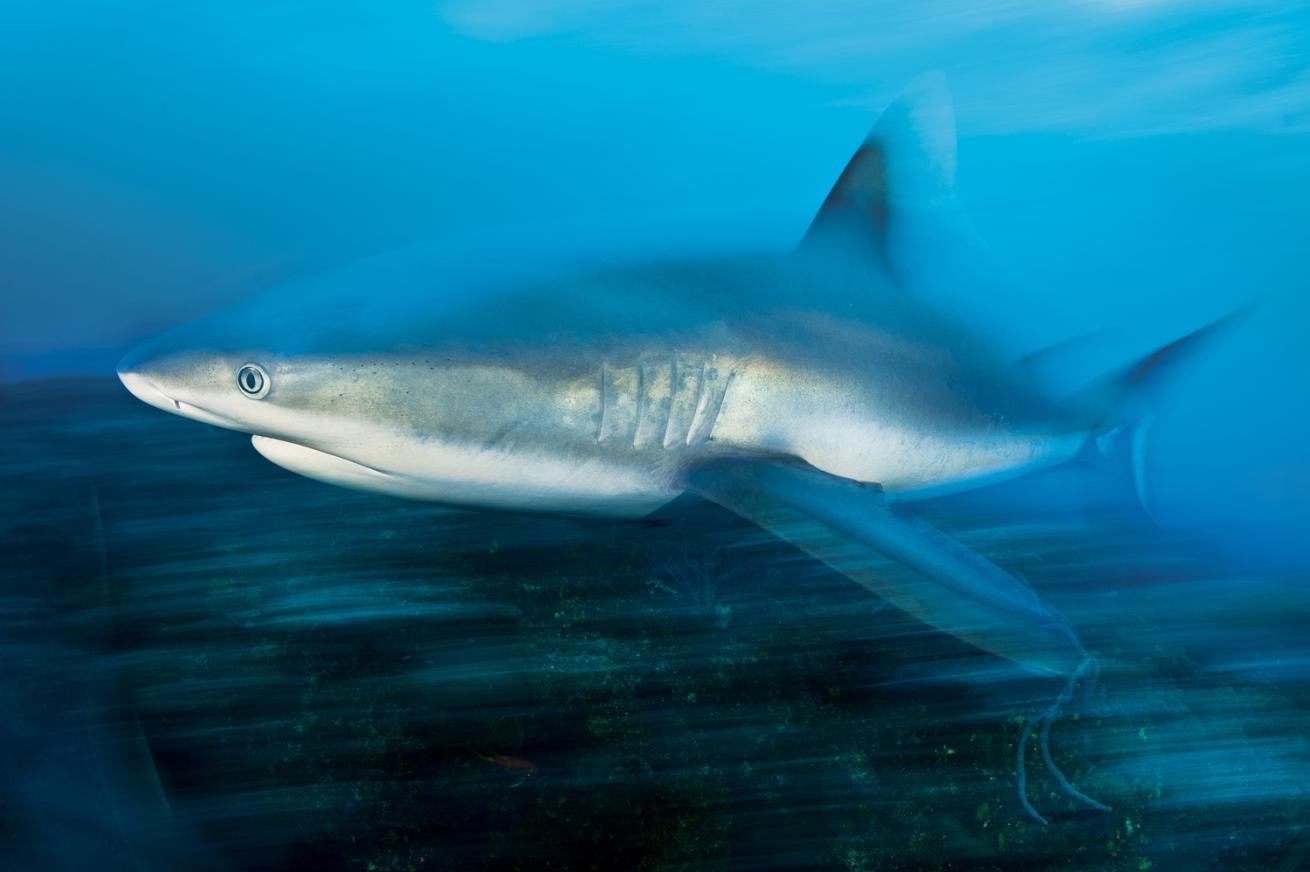
Alex MustardPhoto Tips: Panning With the Sharks
CAMERA Nikon D700, Subal housing // LENS Sigma 15mm fish-eye, plus 1.4x teleconverter // STROBES Subtronic Alphas // SETTINGS f/22, 1/3 sec, ISO 200 // LOCATION Grand Bahama, the BahamasThe canny photographer knows that panning with a subject at low shutter speeds is an excellent way to add a sense of motion to a composition.
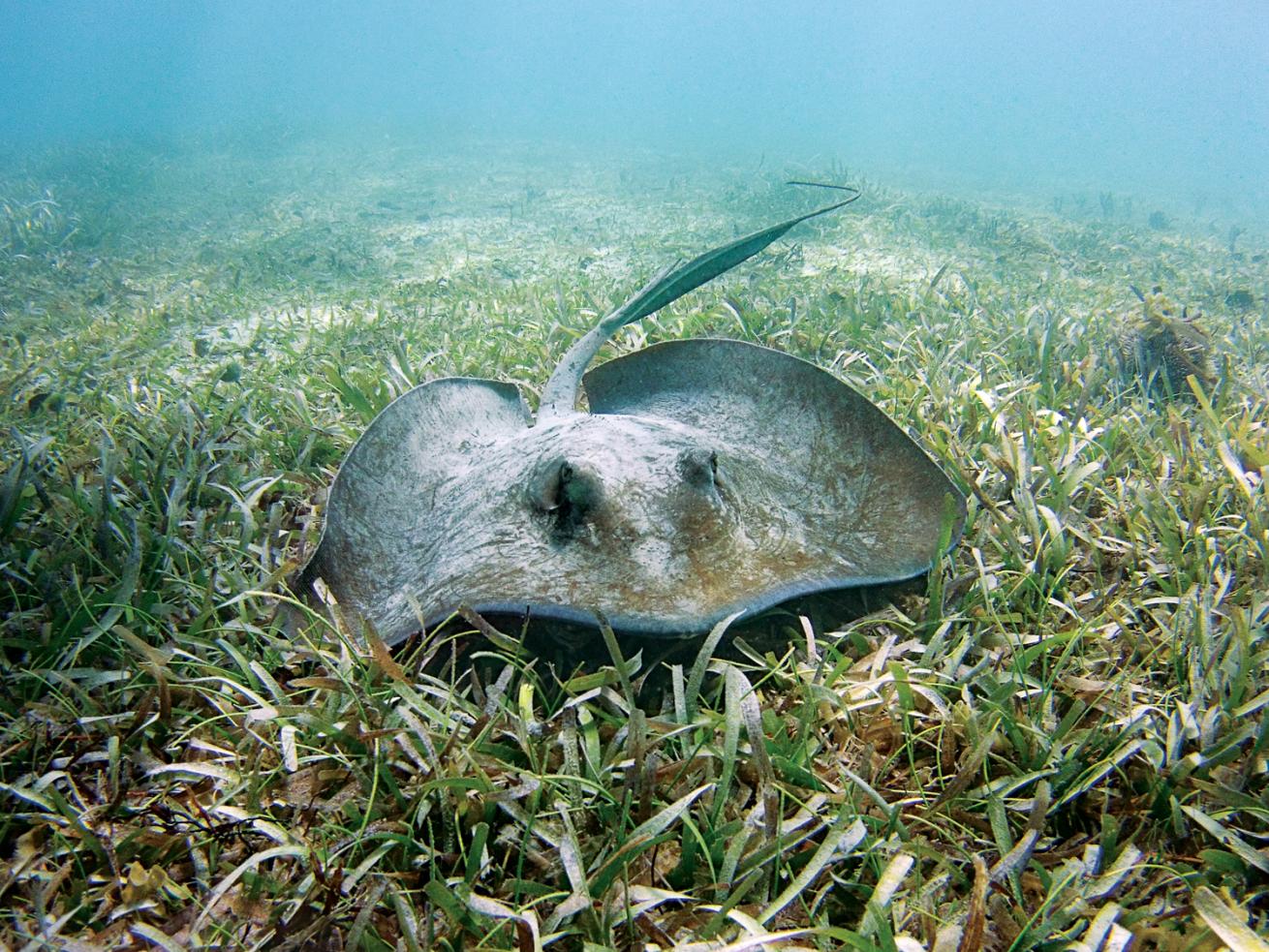
John YavorskyPhoto Tips: Stingray, Tamarindo Beach
CAMERA SeaLife Micro HD // STROBES Available light (8 feet) // SETTINGS f/2.8, 1/800 sec, ISO 100 // LOCATION Tamarindo Beach, Culebra, Puerto Rico // CONDITIONS Sunny and calm, with temps in the low 80sMYSEALIFEPIC
"I took this shot with my grandchildren the year after I certified them. Tamarindo Beach is a favorite for snorkeling because it is in a protected bay, and has lots of stingrays and turtles. As a PADI instructor, I was looking for an easy shore dive for a refresher course." — Photo by John Yavorsky
“When shooting with available light, for the best color and detail, aim in the direction the sun is shining. ” — Alex Mustard
No current, no fun!” beams Semi, our Fijian dive guide, his tag line neatly summing up every photographer’s love-hate relationship with shooting underwater scenes in currents. There’s no question that the current breathes life into the underwater world: soft corals unfurl, polyps of sea fans open, fish go into formation, and big beasts appear from the depths. The flip side is that current also makes it difficult for photographers to find the precise position required for framing, lighting and focusing their underwater subjects. Since many currents are driven by tides, experienced dive operators will typically navigate around sites at slack water or when the current is running in a favorable direction. Once underwater, due to the complex topography of dive sites, currents create everything from calm areas that provide shelter to extremely strong pockets where water is squeezing through at a rapid pace.
It’s these strong currents that make photography nearly impossible. During these conditions, it’s best to let your shot list take a backseat and enjoy the dive. However, currents rarely run forever, and eventually you will find yourself in more acceptable shooting conditions.
Set Up for Success
In moving water, wide angle is easier to shoot than macro. Kicking in a current and fiddling with camera settings and strobe positions is a recipe for frustra- tion. Instead, set up your camera for a particular shot, and then drift down the reef shooting it repeatedly. Technically, the image will be the same, but the subject matter will constantly change. When approaching a promising scene, fin gently against the current to slow your pass, take a few frames and drift on.
Get Hooked
Some of the world’s best big-animal dives are drift dives found in places such as Palau’s Blue Corner, or in the passes of atolls in the Maldives or French Polynesia. To stay in one place in the current, use a reef hook — a metal hook that attaches to one of the D-rings on your BC — and a rock or dead piece of coral.
Hooking on normally will face you into the current and leave you with nothing but butt shots. Attach your reef hook to the side of your BC, and you will automatically rotate onto your side, allowing you to shoot the subjects as they swim past. To make your photos even more dynamic, experiment with long exposures to capture the movement of your subjects.
Model Thinking
Scenery blooms in the current, creating an excellent chance to shoot divers exploring the flourishing underwater scenes. However, working with a model is very challenging in a current because the photographer and model, positioned on either side of the subject, will experience opposite currents. It is much easier to hold position swimming into the current. So remember: If it’s easy for you, it will be hard for the model. Most photographers choose to make it tougher for themselves and stress-free for the model.


